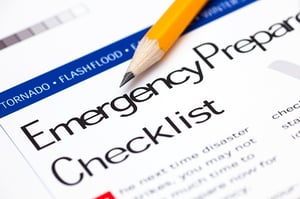Emergency Preparedness for Dialysis Clinics
One of the most devastating hurricanes in the history of the United States, Hurricane Katrina caused $75 billion in damage in New Orleans and along the Mississippi coast. Beyond its toll on infrastructure and the lives of the area’s citizens, the hurricane  exposed several gaps in emergency preparedness for hemodialysis patients. Many clinics in the area didn’t have sufficient emergency preparedness plans in place; patients didn’t know how to adequately prepare for the storm; and public health officials were unaware of how much of the population was dependent on dialysis.
exposed several gaps in emergency preparedness for hemodialysis patients. Many clinics in the area didn’t have sufficient emergency preparedness plans in place; patients didn’t know how to adequately prepare for the storm; and public health officials were unaware of how much of the population was dependent on dialysis.
In the Gulf Coast area, the hurricane caused 94 dialysis facilities to close and around 6,000 patients to look for dialysis care elsewhere. Though hurricanes account for many disasters dialysis clinics face, they’re also vulnerable to other weather events and power outages.
Emergency Preparedness for Dialysis Clinics: What To Include
To be eligible for Medicare reimbursement, all dialysis clinics must create an emergency preparedness plan that must be updated or reviewed annually. Each annual review must be documented to include who reviewed it and when, as well as any updates that were made.
An emergency plan, however, is only a portion of what your clinic needs to stay safe. Your clinic’s full emergency preparedness plan should include:
- An assessment facility-based and community-based risks that can help you address the needs of your patients during an emergency
- How you will identify the continuity of the business operations that will provide support during the emergency
- The particular hazards likely to occur in your area, including whether you are at risk for hurricanes, severe winter weather or flooding
- Non-weather related disasters that could occur, including power outages, cyber attacks and loss of water or heat
Emergency Preparedness for Dialysis Clinics: For Patients
Patients should also have their own dialysis emergency preparedness plans and review them with clinic staff annually. When reviewing, make sure your patients’ plans include:
- An understanding of an emergency renal diet
- A list of medications
- Their current status
- A copy of their dialysis treatment plan
Emergency Preparedness for Dialysis Clinics: Staff Readiness
In addition to ensuring your facility has the proper safeguards in place to protect its operations and buildings, your staff should receive training. And like the clinic’s emergency preparedness plan, staff training and review should occur annually. Staff should be able to demonstrate emergency procedures, including training patients on what to do, where to go if the facility is evacuated, how to disconnect themselves from a dialysis machine, and who to contact if the patient is not in the facility when an emergency occurs, including an alternate phone number where the dialysis care team can be reached.
For More on Emergency Preparedness Planning, read CMS’ guide for chronic dialysis facilities.
Emergency Preparedness for Dialysis Clinics: Additional Planning
If there are nearby dialysis facilities, check with them to see if you can form a cooperative disaster planning organization. If you’re unsure if any other clinics are nearby, you can contact ESRD Network or visit www.medicare.gov. You’ll also want to contact your county’s EMS agency, which can include your facility in its list of county medical emergency plans.




